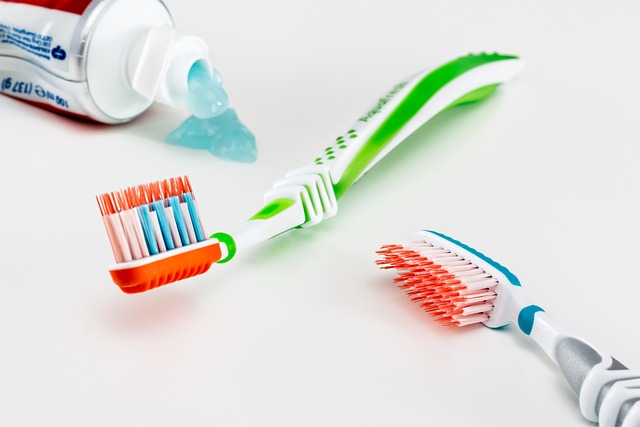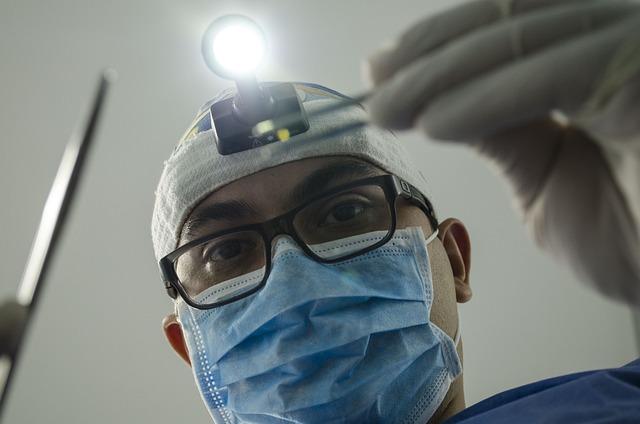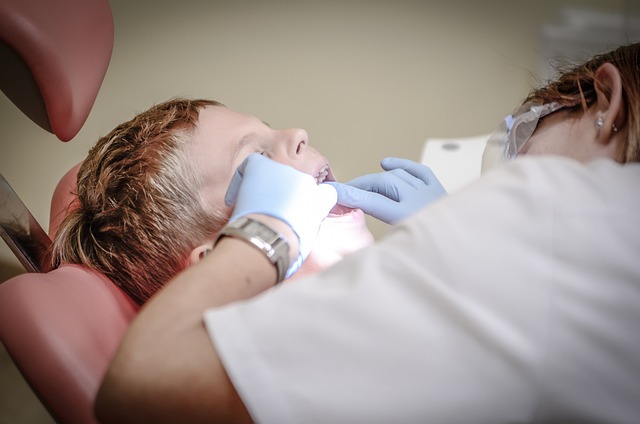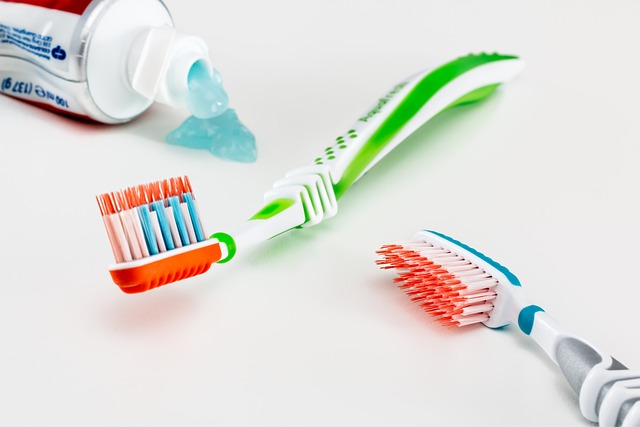Disinfecting Retainers After Strep Throat: Dental Hygiene
When it comes to dental hygiene, it’s not just about brushing and flossing. For those who wear retainers, proper care and maintenance are equally important. And if you’ve recently battled with strep throat, it’s crucial to pay extra attention to disinfecting your retainers. In this article, we will delve into the best practices for keeping your retainers germ-free after a bout of strep throat, ensuring your dental health remains in top shape. So, let’s dive into the world of disinfecting retainers after strep throat and discover the essential steps you need to take for effective dental hygiene.
1. Understanding the Importance of Disinfecting Retainers: Maintaining Optimal Dental Hygiene
Proper dental hygiene goes beyond just brushing and flossing your teeth; it extends to the care and maintenance of your dental appliances, such as retainers. Disinfecting your retainers is a crucial step in maintaining optimal dental hygiene, as it helps eliminate harmful bacteria and prevents oral infections. By understanding the importance of disinfecting your retainers, you can ensure the longevity of your dental appliances and promote a healthy oral environment.
One of the primary reasons for disinfecting retainers is to eliminate bacteria. Throughout the day, your retainers come into contact with various microorganisms present in your mouth. These bacteria can multiply and lead to oral health problems, such as bad breath, gum disease, and tooth decay. Regular disinfection helps to kill these bacteria, keeping your retainers clean and free from harmful microorganisms. Additionally, disinfecting your retainers can help prevent the development of oral infections, which can negatively impact your overall oral health.

2. The Relationship Between Strep Throat and Retainers: How Infection Spreads
Strep throat is a common bacterial infection that affects the throat and tonsils. It is caused by the group A Streptococcus bacteria and is highly contagious. One might wonder how strep throat is related to retainers, and it’s important to understand how infection spreads to prevent its transmission.
When wearing a retainer, it creates a warm and moist environment in the mouth, which can be a breeding ground for bacteria. If proper oral hygiene is not maintained, harmful bacteria, including streptococcus, can accumulate on the retainer’s surface. Additionally, retainers can harbor saliva and particles of food, providing a perfect environment for bacteria to thrive. Therefore, if someone with strep throat wears a retainer and does not clean it regularly, the infection-causing bacteria can easily spread from the mouth to the retainer and vice versa. This can not only prolong the illness but also increase the risk of reinfection or transmitting the infection to others.

3. Step-by-Step Guide: Properly Disinfecting Retainers to Prevent Reinfection
Properly disinfecting retainers is crucial in preventing reinfection and maintaining good oral hygiene. Follow these step-by-step instructions to ensure that your retainers remain clean and free from harmful bacteria:
Cleaning Solution:
- Start by creating a cleaning solution using warm water and a mild, non-alcoholic, non-abrasive soap. Avoid using toothpaste, as it can be too abrasive for retainers.
- Submerge your retainers in the cleaning solution and gently brush them with a soft toothbrush to remove any debris or plaque buildup. Be sure to clean all surfaces, including the inside and outside of the retainers.
- Rinse the retainers thoroughly with warm water to remove any soap residue.
Disinfecting Solution:
- Prepare a disinfecting solution by mixing equal parts of water and hydrogen peroxide. Do not use full-strength hydrogen peroxide, as it can damage the retainers.
- Place the retainers in the disinfecting solution and let them soak for approximately 15 minutes.
- After disinfecting, rinse the retainers thoroughly with water to remove any residual hydrogen peroxide.
By following these simple steps regularly, you can effectively disinfect your retainers and reduce the risk of reinfection. Remember to consult your orthodontist for specific instructions and recommendations tailored to your retainer type and individual needs.

4. Choosing the Right Disinfectant: Effective Solutions for Retainer Hygiene
When it comes to maintaining proper retainer hygiene, choosing the right disinfectant is crucial. With so many options available in the market, it can be overwhelming to make the right choice. To ensure effective disinfection, consider the following factors:
- Ingredients: Look for disinfectants that contain active ingredients such as hydrogen peroxide or sodium hypochlorite. These ingredients have proven antimicrobial properties and are effective against a wide range of bacteria and viruses.
- Compatibility: Ensure that the disinfectant you choose is compatible with the material of your retainer. Different types of retainers, such as plastic or metal, may require specific disinfectants to avoid damage.
- Convenience: Consider the ease of use and convenience of the disinfectant. Look for products that offer simple application methods, such as sprays or wipes, to make the disinfection process quick and hassle-free.
Additionally, it is important to follow the manufacturer’s instructions for proper dilution and application of the disinfectant. Avoid using harsh chemicals or household cleaners, as they may be too abrasive and can damage the retainer. Regularly disinfecting your retainer using an effective solution will help keep it clean and free from harmful bacteria, ensuring optimal oral hygiene and overall health.

5. Don’t Forget the Basics: Daily Cleaning Techniques for Retainers
Keeping your retainers clean is essential to maintain their effectiveness and prevent any potential oral health issues. Here are some daily cleaning techniques that you should follow:
- Brush your retainers: Use a soft-bristled toothbrush and non-abrasive toothpaste to gently brush your retainers. This will help remove any buildup of bacteria, plaque, or food particles. Be sure to brush all surfaces of the retainers, including the wires and clasps.
- Rinse with warm water: After brushing, rinse your retainers thoroughly with warm water. This will help remove any remaining toothpaste or debris.
- Soak in a denture cleaner: To ensure a deep clean, soak your retainers in a denture cleaner solution as directed by your orthodontist. This will help eliminate any stubborn bacteria or stains that brushing alone may not remove.
Additionally, here are a few more tips to keep in mind:
- Avoid hot water: Hot water can warp or damage your retainers, so always use warm water for cleaning.
- Avoid harsh chemicals: Avoid using strong chemicals or alcohol-based mouthwashes to clean your retainers, as they can cause damage.
- Store properly: When not wearing your retainers, store them in their designated case to protect them from damage or loss.
6. Maintaining a Healthy Oral Environment: Additional Tips for Optimal Dental Hygiene
There are several additional tips to help you maintain a healthy oral environment and achieve optimal dental hygiene. By incorporating these practices into your daily routine, you can promote strong teeth and gums, prevent dental problems, and maintain a bright smile.
- Brush properly: Brush your teeth at least twice a day using a soft-bristled toothbrush. Use gentle, circular motions to clean all tooth surfaces and pay special attention to the gumline. Avoid applying excessive pressure, as this can damage your gums.
- Floss daily: Regular flossing is essential for removing plaque and food particles from between your teeth and along the gumline. Take approximately 18 inches of floss and wrap it around your middle fingers, leaving a few inches to work with. Gently slide the floss between your teeth, making a C shape around each tooth and moving it up and down to remove debris.
- Use mouthwash: Incorporate an antimicrobial mouthwash into your oral hygiene routine. Rinse your mouth for 30 seconds after brushing and flossing to kill bacteria and freshen your breath.
- Avoid tobacco products: Smoking or using other tobacco products can cause numerous oral health problems, including gum disease, tooth decay, and oral cancer. Quitting tobacco not only improves your oral health but also benefits your overall well-being.
Additionally, it is crucial to schedule regular dental check-ups and cleanings with your dentist. Professional cleanings can remove plaque and tartar buildup that cannot be eliminated through regular brushing and flossing. Your dentist can also identify any oral health issues early on and provide appropriate treatment, ensuring your smile stays healthy and beautiful.
7. Consult Your Dentist: Expert Advice on Retainer Disinfection and Oral Care
When it comes to maintaining good oral hygiene and keeping your retainer clean, consulting your dentist is crucial. Your dentist is an expert in dental care and can provide you with valuable advice on retainer disinfection and oral care. Here are some key tips recommended by professionals:
- Brush your retainer: Just like you brush your teeth, it’s important to brush your retainer regularly. Use a soft-bristled toothbrush and non-abrasive toothpaste to gently clean all surfaces of your retainer.
- Soak your retainer: Soaking your retainer in a denture cleaner or an approved retainer cleaning solution can effectively remove bacteria and plaque. Follow the instructions provided by your dentist or the manufacturer for the recommended soaking time.
- Avoid hot water: Hot water can warp your retainer, so always use cool or lukewarm water when cleaning or soaking it.
- Keep it dry: After cleaning your retainer, make sure to dry it thoroughly before storing it in its case. Moisture can promote bacterial growth, so maintaining a dry environment is essential.
Remember, each individual’s dental needs may vary, so it’s essential to consult your dentist for personalized advice. They can guide you on the best practices for your specific retainer type and offer recommendations to ensure optimal oral care. Regular visits to your dentist can help monitor the condition of your retainer and address any concerns or adjustments needed.
Frequently Asked Questions
Q: How important is it to disinfect retainers after having strep throat?
A: Disinfecting retainers after having strep throat is crucial for maintaining good dental hygiene.
Q: Why is it necessary to disinfect retainers specifically after strep throat?
A: Strep throat is a highly contagious bacterial infection that can easily transfer to objects in close contact with the mouth, such as retainers. Disinfecting them helps prevent reinfection and the spread of bacteria.
Q: How long should I continue disinfecting my retainers after recovering from strep throat?
A: It is recommended to disinfect your retainers for at least two weeks after recovering from strep throat to ensure all bacteria are eradicated.
Q: What is the preferred method for disinfecting retainers?
A: The most effective method of disinfecting retainers is by soaking them in an antimicrobial solution recommended by your dentist or orthodontist. This helps kill any bacteria present on the retainers.
Q: Can I use regular mouthwash to disinfect my retainers?
A: While mouthwash can have some antibacterial properties, it is not recommended as a sole method for disinfecting retainers. Antimicrobial solutions specifically designed for retainers are more effective in eliminating bacteria.
Q: How often should I disinfect my retainers?
A: It is advisable to disinfect your retainers daily, especially after meals, to prevent the buildup of bacteria and maintain good oral hygiene.
Q: Are there any alternative methods for disinfecting retainers?
A: Boiling retainers or using denture cleansers as directed by your dentist can be alternative methods for disinfection. However, it is important to consult your dental professional before trying any alternative methods.
Q: Can I continue wearing my retainers while they are being disinfected?
A: No, it is not recommended to wear retainers while they are being disinfected. Remove them before the disinfection process and follow the instructions provided by your dentist or orthodontist.
Q: Is it necessary to replace my retainers after having strep throat?
A: Consult your dentist or orthodontist to determine if it is necessary to replace your retainers after having strep throat. They will assess the condition of your retainers and provide appropriate guidance.
Q: How can I prevent reinfection after using disinfected retainers?
A: To avoid reinfection, it is essential to maintain good oral hygiene practices, such as brushing and flossing regularly, rinsing your mouth after meals, and avoiding sharing personal items that come into contact with your mouth.
Q: Are there any additional measures I should take to prevent the spread of strep throat?
A: Along with disinfecting your retainers, it is crucial to practice good respiratory hygiene, such as covering your mouth and nose when coughing or sneezing, washing your hands frequently, and avoiding close contact with individuals who have strep throat.
In Summary
In conclusion, proper dental hygiene is crucial when it comes to disinfecting retainers after a bout of strep throat. By following a few simple steps, you can effectively eliminate harmful bacteria and maintain a healthy oral environment. Remember to consult your dentist or orthodontist for specific instructions on how to clean your retainer, as different materials may require different cleaning methods. Taking care of your retainer not only ensures its longevity but also promotes overall oral health. Stay proactive, stay diligent, and prioritize your dental hygiene – your smile will thank you.






